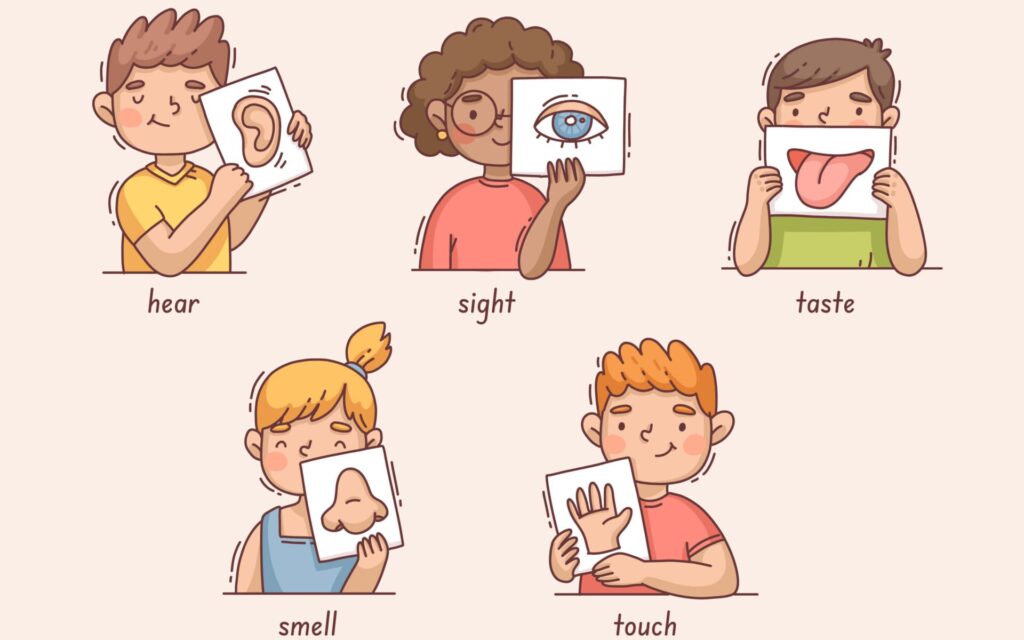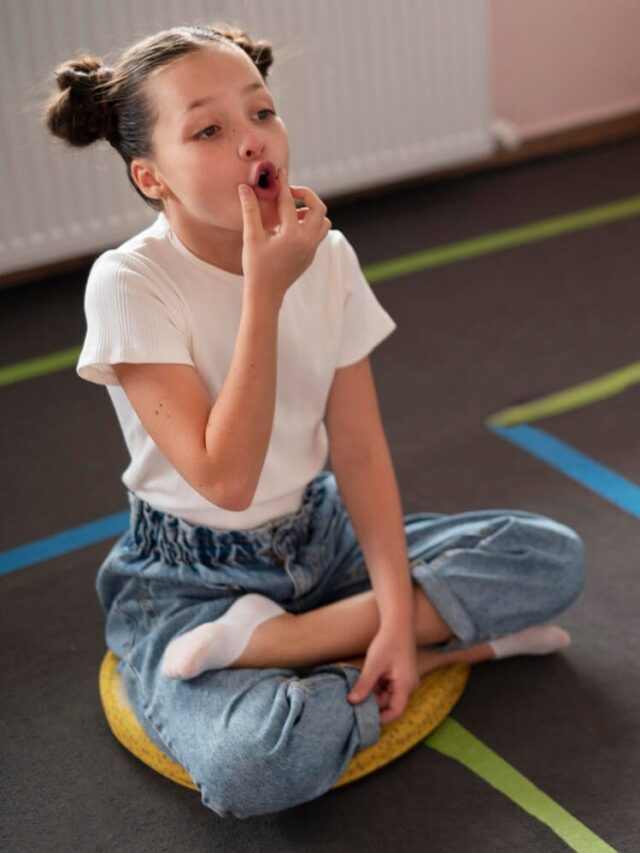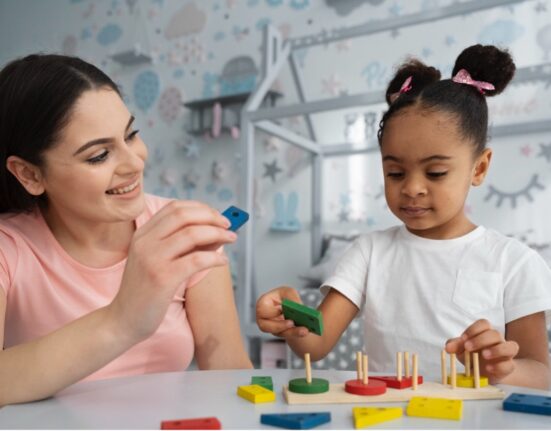Occupational Therapy : An Introduction
Occupational therapy, more commonly abbreviated to “OT,” is a branch of healthcare that takes a holistic approach and puts the patient at the center of the treatment process. Its primary goal is to assist people of all ages in acquiring or regaining the skills necessary for performing activities of daily living.
When it comes to children, occupational therapists (OTs) play a crucial part in fostering their growth in all aspects of their development, including physical, cognitive, emotional, and social growth.This article takes a deep dive into the myriad of ways in which occupational therapists enable children to flourish in all facets of their lives and provides a comprehensive look at those ways.
Improving Fine Motor Skills: The Foundation for Developing Dexterity

Handwriting, buttoning clothing, and using utensils are all examples of activities that require fine motor abilities, which entail the coordination of smaller muscle groups than those used in gross motor skills. Occupational therapists put forth a lot of effort to teach children these skills and help them become more proficient in them. Children can enhance their precision, coordination, and control by participating in imaginative pursuits such as drawing, coloring, cutting, and the manipulation of items of varying sizes and textures. Occupational therapists (OTs) are trained to facilitate these kinds of activities. Children who possess these abilities are able to excel in activities that require accuracy and manual dexterity, which is a prerequisite for scholastic achievement.
Supporting the Development of Gross Motor Skills

The development of gross motor abilities, which involve bigger muscle movements, is crucial to a person’s overall physical development. They include things like sprinting, jumping, climbing, and balancing on one foot, among other things.
Occupational therapists develop tailored exercise regimens and fun activities for children to participate in with the goal of improving the children’s muscular strength, coordination, and endurance as well as their general physical competence. These abilities not only help to a child’s physical well-being, but they also increase a child’s self-confidence, which in turn encourages children to participate in sports and other leisure activities with a positive attitude.
Assistive technology customization: individualized aid for specific difficulties
Some children who struggle with physical or speech difficulties need to use assistive technology such as wheelchairs, orthotic braces, or communication aids in order to be able to function normally. Occupational therapists play a crucial part in the process of ensuring that these aids are adapted to meet the specific requirements of each individual child and take into account their individual skills. Occupational therapists assist children in optimizing their level of independence and functionality by providing careful evaluations and ongoing assistance. This enables the children to take part in day-to-day activities to a greater extent.

Improving Sensory Integration by Striking a Balance in the Senses
Problem-solving ability, memory, the ability to focus attention, and analytical thinking are only few of the cognitive abilities that are necessary for academic achievement and general cognitive development. To encourage children’s mental development and cognitive growth, occupational therapists use a wide range of fun games, challenging puzzles, and physically active activities.
The fact that these pursuits are not only entertaining but also extremely instructional enables young brains to view the educational process as something that is both pleasurable and fruitful.
Meeting Sensory Needs: Comfort Settings
The world can be an extremely challenging environment for children who have sensory processing issues. Everyday situations, such as being in a noisy classroom, being in a crowded location, or touching a certain texture, might bring on feelings of discomfort and anxiety.
Occupational therapists design sensory-friendly surroundings and activities that are specifically catered to meet the requirements of a child’s unique sensory profile. This may involve the production of sensory diets, the construction of sensory spaces, or the application of specialist sensory equipment and approaches. Occupational therapists make children feel more at comfortable in their surroundings by addressing the sensory demands of the children in their care. This enables the children to concentrate, learn, and engage in activities to a greater degree.
Emotional Intelligence and Self-Control Development by Occupational Therapists
One of the most important aspects of a child’s maturation is the ability to self-regulate their emotions. Occupational therapists work directly with children to assist them in recognizing and understanding their feelings, as well as efficiently managing those feelings. Occupational therapists equip children with the tools necessary to confidently traverse the complexities of life by teaching them techniques to deal with stressful situations, anxious feelings, and emotional issues. These abilities not only promote a child’s emotional well-being but also boost a child’s ability to concentrate and participate in day-to-day activities.

Creating Opportunities for Friendships and Connections
Occupational therapists play a crucial part in the development of a child’s social interaction skills, which is a fundamental component of human growth and development. They help youngsters enhance their communication and social interaction skills by engaging them in role-playing exercises, activities in groups, and structured training programs for social skills. Because of these interventions, children are given the ability to begin and maintain meaningful interactions with adults and peers alike, which ultimately improves their quality of life as a whole.
Increased self-care skills lead to independence and self-confidence.
Children benefit from occupational therapy by gaining the skills necessary for self-care, which enables them to independently carry out necessary responsibilities. These capabilities include things like clothing oneself, taking a shower, grooming oneself, and feeding oneself. Children who are successful in mastering these routines for self-care enjoy a strong sense of accomplishment and develop greater levels of self-esteem as a result. Developing independence and a sense of self-sufficiency requires the acquisition of skills such as these.
Strengthening Families through Facilitating Caregivers’ Growth
Occupational therapy has an effect that is felt beyond the confines of individual therapy sessions. Occupational therapists are able to provide families with vital support and instruction, as well as provide caregivers with tools and tactics to reinforce therapy.
As advocates for children’s growth and development, occupational therapists address physical, cognitive, emotional, and social needs. OTs help children succeed through tailored interventions, innovative activities, and a deep grasp of their issues. Whether they’re improving fine motor skills, emotional management, social skills, or assistive equipment, occupational therapists help children live better and have a brighter future. Their passion and experience help children overcome barriers and reach their full potential in life.
You may Also like: Breaking Barriers: How Special Education Make a Positive Difference in People’s Lives in the World of Autism Top 10 Parenting Tips for Autistic Children to Foster Closer Relationships
Pic Credit for this article: Freepik















Leave feedback about this